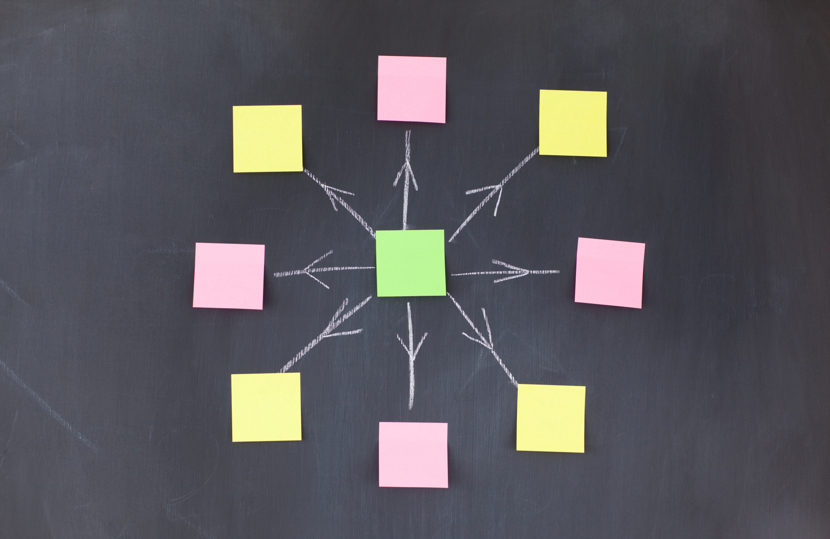
Image by: Wavebreakmedia Ltd, ©2016 Getty Images
“Go digital, and you’ll improve productivity,” they say. It sounds good on paper, but without stepping back to understand a paper-based process, going digital by simply enabling the scanning of documents will be disappointing when looking for return on investment (ROI) in terms of productivity gains.
Why is that? Often, going digital means making a scan of a paper document. The user creates a scan, and the device sends it to his or her email where more steps have to take place, such as emailing it to a colleague or saving it to a folder on the workstation. Later, when someone needs to find that document, a lot of time may be spent trying to find the right folder and then finding the right document.
Real productivity gains happen when those steps are eliminated and a scan can go directly to a pre-determined location, others are notified of its existence, and, if needed later, can be found using familiar search keywords.
Understand and re-think paper processes
In order to achieve real productivity gains, it is best to consult with workers on the steps they are using in a paper-based workflow. Select a few high-volume, paper-based tasks in your organization, and then document the steps and the time it takes to process each document, deliver it, and find it later. Evaluate whether going digital will, indeed, improve productivity. Where can the process be streamlined? Where does it make sense to change the process to make digital work even better? Using a managed print services expert can be invaluable in identifying and documenting these processes with your employees.
Once you are ready to implement a digital workflow, consider what is needed in a software solution.
Must-have features to realize productivity gains
Basic solution capabilities to look for to improve productivity by digitizing document workflows include:
1. Scanning and workflow
Solutions that only offer scanning to an email address (or a networked folder) do not solve a workflow process. Workflows are created by administrators and can be set up for specific users or groups of users. By definition, they are an end-to-end process—from the scan all the way through to delivery and notifications.
2. Searchable electronic documents
2. Searchable electronic documents
Be sure that the device is capable of creating searchable PDFs. Most multifunction devices have standard scan functions, which create an image. Images are not text searchable. Software solutions, which are designed to work with a multifunction device, can create a PDF that is text searchable. This saves valuable time when the document needs to be retrieved later.
3. Automated delivery of scans to pre-determined repositories
3. Automated delivery of scans to pre-determined repositories
These repositories can be anything from a SharePoint location, to an enterprise resource planning (ERP) system, to proprietary software. The important thing here is that it is automated and that access to the repositories are controlled, especially if there is customer sensitive information involved.
4. A notification system
4. A notification system
If an assistant scans a document and has to email someone to tell them the document is there, then productivity is not improved. The workflow should include notifications sent to those who need to take action on that document.
5. Reports
5. Reports
Administrators should be able to track the scans and delivery of scans to repositories. This is important both to ensure that the workflow is working as expected in normal volumes compared to the paper-based workflow and that scans are not sent to unauthorized locations. These reports can be used for audit and compliance purposes, especially for industries that have compliance requirements such as healthcare and government.
More about workflows
Typically, end-to-end workflows are created by an information technology (IT) administrator. It is important for the workflow solution to be customized to the steps taken in the task and to make it as easy as possible for the user. The solution should enable the administrator to very quickly create a workflow for any paper-based task by individual user or groups of users.
As an example, a construction company may receive documents in the mail related to a building project—architectural plans and copies of permits. The project assistant may need to file these and alert the project manager that they have arrived. A workflow could be created where the assistant simply selects the name or code for the project and the document is automatically stored in the right project file. Further, the workflow would generate a notification to the project manager that the document has arrived, which may trigger action on his/her part.
The capabilities mentioned above are very basic. Your organization may want more capabilities such as storing documents in PDF/A format, which is suitable to comply with government or other regulatory requirements for long-term archiving. Password-protected scanned documents may also be desirable. Some organizations, such as those in the healthcare industry, may use barcodes for patient records and may want barcode recognition or other optical character recognition (OCR) capabilities. Documents with very large page counts may require more robust features that allow them to append pages or remove blank pages.
There are other reasons for going digital in addition to gains in productivity: savings on paper and other paper-related costs, such as physical storage, faster and convenient customer communications, and the environment. However, if justifying going digital rests on productivity gains, be sure to choose a solution that truly addresses the crucial steps in a document workflow.
More about workflows
Typically, end-to-end workflows are created by an information technology (IT) administrator. It is important for the workflow solution to be customized to the steps taken in the task and to make it as easy as possible for the user. The solution should enable the administrator to very quickly create a workflow for any paper-based task by individual user or groups of users.
As an example, a construction company may receive documents in the mail related to a building project—architectural plans and copies of permits. The project assistant may need to file these and alert the project manager that they have arrived. A workflow could be created where the assistant simply selects the name or code for the project and the document is automatically stored in the right project file. Further, the workflow would generate a notification to the project manager that the document has arrived, which may trigger action on his/her part.
The capabilities mentioned above are very basic. Your organization may want more capabilities such as storing documents in PDF/A format, which is suitable to comply with government or other regulatory requirements for long-term archiving. Password-protected scanned documents may also be desirable. Some organizations, such as those in the healthcare industry, may use barcodes for patient records and may want barcode recognition or other optical character recognition (OCR) capabilities. Documents with very large page counts may require more robust features that allow them to append pages or remove blank pages.
There are other reasons for going digital in addition to gains in productivity: savings on paper and other paper-related costs, such as physical storage, faster and convenient customer communications, and the environment. However, if justifying going digital rests on productivity gains, be sure to choose a solution that truly addresses the crucial steps in a document workflow.
Wouter Koelewijn is the Senior Vice President, Managing Director of the Y Soft Scanning Division. He is an outspoken advocate for simplifying scanning on multifunction devices. Prior to working with Y Soft, Wouter founded X-Solutions in late 2002, which was later acquired by Nuance in 2009. For more, visit www.ysoft.com. Follow Y Soft on Twitter @YSoft.










